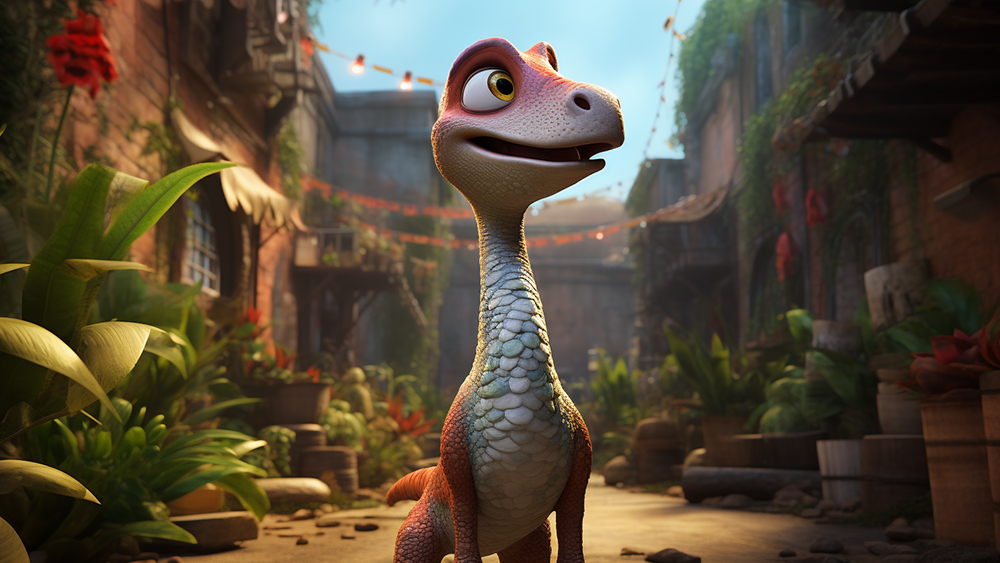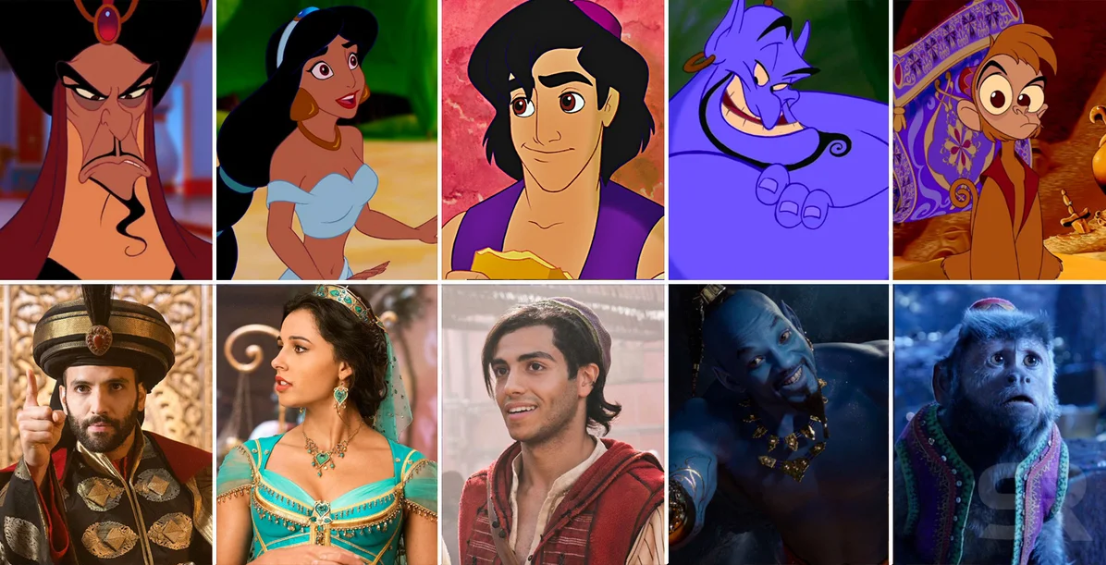People outside the animation or film industries usually have an answer to that question. However, it’s a much different story from the inside. If you’re spending a significant amount of time or resources on a project, you’re bound to overthink if it’s the right choice for you. Do you need more imagination or more realism? How ready are you to loosen the purse strings? What would your audience prefer?
On one hand, there’s animation: computer-generated or hand-drawn frames, from surreal to hyper-realistic, with a massive range of fictional possibilities. On the other hand, live-action captures real-life actions and events, features live actors and sets, and promises to simulate another reality for your audience.
Both play crucial roles in the filmmaking industry, contributing to the diversity of storytelling and cinematic experiences. Animation enables the creation of imaginative and surreal narratives that may be challenging or impossible to achieve in live-action. Live-action excels in portraying realism and capturing the nuances of human emotions and interactions. You can use both, but which one is more effective?
This article aims to delve into the advantages and disadvantages of both options. We’ll review three pros and three cons for each, then end with a comparison based on what you might need for your production. Let’s delve in!
Animation: Pros & Cons
First up, the younger of your choices. Generally speaking, animation allows you unlimited creative room in return for a trickier production.
Pro 1: Creative Freedom & Imagination
One of animation’s primary advantages is its boundless creative freedom. Filmmakers can create characters, settings, and visuals that defy the constraints of the real world. This allows for exploring unique and visually stunning concepts that may not be achievable in live-action.
Animation provides a platform for the creation of entire fantasy worlds where the laws of physics and reality can be bent or rewritten. This opens the door to storytelling possibilities that go beyond the limitations of the physical realm, encouraging so many imaginative narratives that the world has not yet seen.
Pro 2: Flexibility in Storytelling
Animation allows for the portrayal of abstract concepts and metaphors with ease. Symbolism and visual allegories can be employed to convey complex ideas, making it a powerful medium for storytelling that goes beyond the literal.
Plus, time and space can easily be manipulated in animation, which is a unique storytelling tool. Filmmakers can compress or expand time, travel between dimensions, and play with temporal elements to enhance the narrative. This flexibility adds a layer of complexity to animated stories. You can take a look at Rick and Morty (2013) as an example, where travel between dimensions is the norm, and you may see virtually any abstractions with your own eyes!
Pro 3: Longevity & Timelessness
Great animated films often have a timeless quality that appeals to audiences of all ages. The lack of reliance on current trends or fashion trends allows these films to maintain their appeal across generations, creating a lasting impact. We often don’t tie animated characters to a specific time period or cultural context, so old animations are often more appealing than old movies. Nostalgia plays a role here, too!
Certain animated films have also achieved classic status, which adds to their appeal. These cultural touchstones continue to be celebrated and enjoyed long after their initial release. The enduring popularity of these classics demonstrates the lasting power of animation in storytelling. An example of this is The Little Mermaid (1989). Disney, Hans Christian Andersen, and spontaneous songs. What’s not to love?
Con 1: Time-Consuming Production
The production of animated content is often time-consuming. This is especially true in stop motion, anime, or traditional hand-drawn animation. Each frame must be meticulously crafted, requiring significant effort and attention to detail.
Due to the intricate nature of animation, the production timelines for animated projects can be considerably longer compared to live-action. (Motion capture brings a twist here!) This extended duration may not be suitable for projects with tight deadlines.
Con 2: Cost Factors
Animation, particularly high-quality computer-generated animation, can incur substantial production costs. (Even with AI’s help!) The need for skilled animators, advanced software, and various hardware contributes to the overall expense of creating animated content. Cloud-based AI solutions and remote motion capture might offset some of the costs.
Producing quality animation also requires a specialized skill set. Creatives you work with must possess a deep understanding of movement, character design, and storytelling techniques. Acquiring and retaining such talents can be challenging and adds to the overall cost.
Con 3: Perceived Limited Appeal (Possibly)
While animated films have gained widespread acceptance, some audiences may still perceive them as primarily for children. This perception can limit the potential reach of animated content, particularly for projects that target specific demographics.
In some cases, animated content may inadvertently perpetuate cultural stereotypes, leading to criticism and a potential decline in audience engagement. Filmmakers must navigate cultural sensitivity to ensure their animated works resonate positively with diverse audiences they might intend to reach.

Live-Action: Pros and Cons
Now, it’s time for the older choice. In a nutshell, live-action offers more real-life visuals in a less intricate production process in exchange for physical and aging limitations.
Pro 1: Realism & Authenticity
Featuring human actors in their own bodies, live-action excels in capturing the nuances of human emotions and expressions. The subtleties of facial expressions, body language, and the genuine interactions between actors contribute to a heightened sense of realism and authenticity. No more trying to capture everything in mocap; everything is already there!
Live-action also benefits from the use of real locations and physical sets, providing a tangible and authentic backdrop for storytelling. This realism can enhance the audience’s connection to the narrative and characters. Pick your favorite live-action as an example here!
Pro 2: Immediate Production
Live-action production typically has a faster turnaround time compared to animation. The ability to shoot scenes in real time reduces the time required to bring a project from pre-production to post-production.
The production processes in live-action filmmaking are often more streamlined, too, involving fewer steps than animation. This efficiency can be advantageous for projects with tight schedules or budget constraints.
Pro 3: Broad Human Appeal
Live-action films offer audiences a direct connection with actors who bring characters to life. This connection can lead to a deeper emotional engagement as viewers relate to the human experiences portrayed on screen. It’s more on the nose compared to animation!
Live-action is also versatile in its ability to explore a wide range of genres and styles. From drama to comedy, horror to romance, live-action can adapt to various storytelling modes, catering to diverse audience preferences. We’re not saying animation can’t do that, but animation usually ends up being more imaginative, while live-action tends to fall into everyday human experience.
Con 1: Budgetary Constraints (Again!)
The realistic portrayal of settings in live-action often comes with high costs. Constructing intricate sets or shooting on location can strain production budgets, making it challenging for independent filmmakers or projects with limited funding. (All this while remote mocap can be done without a studio! You get the picture.)
Plus, live-action projects that incorporate special effects can incur significant expenses. The demand for realistic visual effects or CGI elements may require substantial financial investments, impacting the overall budget.
Con 2: Physical Limitations
Where animation excels in fantasy elements, live-action adheres to the constraints of real-world physics. It faces limitations when defying the laws of physics or reality or portraying extraordinary events or characters.
While advancements in CGI have expanded possibilities, certain imaginative or abstract concepts may still be challenging to execute convincingly. So, otherworldly narratives may still be better off in animation sometimes.
Con 3: Aging and Time-Dependent
“It’s a great watch… once you get used to the visuals!” Live-action films may suffer from the aging of visuals and fashion trends. The depiction of technology, clothing, and cultural elements in a live-action movie may become dated over time, potentially affecting the film’s resonance with contemporary audiences. Take Friends (1994-2004), for example. Fans can’t get enough of it, but you can’t just recommend it and go. You should also forbid people from throwing it out because of the old visuals or the live audience!
While some live-action films achieve classic status, the longevity of live-action works may be more dependent on the era in which they were produced. On the other hand, animation’s timeless appeal can sometimes surpass the temporal constraints that affect live-action.

Comparison and Contrast
We’ve covered both options’ pros and cons. Now, let’s compare both in terms of visual appeal, storytelling potential, production considerations, and audience reception.
Visual Appeal
Animation’s Unique Aesthetic
The visual appeal of animation lies in its unique aesthetic. Whether hand-drawn or computer-generated, animated films often showcase vibrant colors, imaginative designs, and visually striking elements that contribute to a distinct and memorable visual experience.
Live-Action’s Emphasis on Realism
Live-action, on the other hand, emphasizes realism. Using real actors, sets, and locations provides a visual authenticity that resonates with audiences seeking a more lifelike representation of the world.
Storytelling Potential
Animation’s Flexibility in Narrative
Animation’s storytelling potential is characterized by its flexibility. The ability to transcend the boundaries of reality allows for the exploration of many diverse narratives, from epic fantasy adventures to thought-provoking allegories and whimsical tales.
Live-Action’s Emphasis on Human Connection
Live-action excels in emphasizing human connection. The portrayal of real actors and tangible environments facilitates a direct and relatable engagement with characters, emotions, and interpersonal dynamics. Evolutionally speaking, you’re more likely to resonate with a live-action scene.
Production Considerations
Time & Cost Factors
Animation requires time and resources due to the meticulous frame-by-frame process and the need for specialized skills. Live-action requires physical sets and considerable hardware on-set. The numbers very much depend on your own choices!
Skill Sets Required
The skill sets required for animation and live-action differ significantly. Animation demands expertise in illustration, computer graphics, and animation techniques. Live-action relies on directing, cinematography, and working with actors to bring scripts to life. The scale tips a little in favor of animation here.
Audience Reception
Demographics and Preferences
Animation tends to appeal to a broad spectrum of audiences, including children, families, and adults. Live-action, with its emphasis on realism, may cater to audiences seeking more mature and relatable storytelling. (Basically, you might lose some adults with animation and some kids with live-action.)
Cultural and Regional Variances
Cultural and regional factors can influence audience reception differently for animation and live-action. While animation may have universal appeal, certain live-action genres and styles may resonate more strongly with specific cultural or regional preferences.
| Animation | Live-Action | ||
| More creative freedom | Time-consuming production | Realistic | Physically limited |
| Easier storytelling | Costly | Possibly shorter production | Also costly |
| More timeless | Limited appeal for some audiences | Better connection for some audiences | Usually ages badly |
The Verdict: Which One Should You Use?
Noth animation and live-action offer distinct advantages and face unique challenges in filmmaking.
Animation provides unparalleled creative freedom, allowing filmmakers to explore limitless possibilities in design and storytelling. However, it comes with time-consuming production processes, high costs, and occasional perceptions of limited appeal.
Live-action excels in realism, immediacy, and broad audience appeal, fostering a direct connection with viewers. Yet, it faces similar budgetary constraints, physical limitations in portraying fantasy elements, and the potential for aging visuals.
It’s necessary to point out that the line between animation and live-action continues to blur with the integration of computer-generated imagery (CGI) and other visual effects. Filmmakers are increasingly combining elements from both mediums to achieve innovative and visually stunning results.
Ultimately, the decision between animation and live-action depends on the project’s specific requirements and the filmmaker’s creative vision. Balancing creativity with practical considerations, including budget, timeline, and target audience, is the key to successful filmmaking. Both animation and live-action have their place in the cinematic landscape, and the choice between them should be guided by the unique demands of each storytelling endeavor.
Need advice from a creative studio? We’d love for you to reach out!
Author
